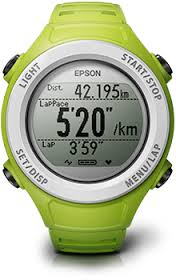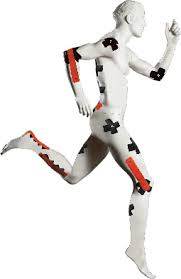Product Review: Epson Runsense SF-110 GPS Watch

I recently had the opportunity to try out Epson’s new Runsense SF-110 GPS Watch for a few weeks. With a suggested retail price of around $140, Epson is aiming for runners who are buying their first GPS watch.
If I was buying a GPS watch for the first time, I would want a watch that was:
- Easy to use, with quick GPS lock
- Easy to set up
- Easy to connect to training software
- Low cost
I found the Epson SF-110 to be somewhat difficult to set up and use. It is supposed to be able to connect via Bluetooth with Epson’s Run Connect smartphone app. I wasn’t able to pair the watch and my phone, after numerous attempts.
One of the steps that was required in the watch setup was to set the date and time. What kind of GPS watch needs to be told what time it is? The whole Global Positioning Satellite system is based on hyper accurate measurements of time.
One of the features of newer GPS watches is that they sync more quickly with satellites. In some cases, the newer GPS chips may also be more accurate. I didn’t find this to be true for the Epson SF-110. For comparison purposes, I wore a Garmin Forerunner 305 GPS watch, first introduced in 2006, alongside the Epson SF-110.
I found that the older Garmin found the satellites more quickly and was just as accurate as the Epson SF-110. The Epson has an annoying feature that stops the search for satellites at 2 minutes and says “Failed”. If you still want to use GPS tracking, you have to manually restart the search. I found that it sometimes took 2-3 cycles for the Epson to find the satellites.
The Epson SF-110 also beeped at me a very frequent intervals, roughly every quarter mile. I was never able to figure out how to turn it off.
The screen on the Epson SF-110 is fairly small and often cuts off some of the menu items, for example “Smart Pho” is “Smart Phone” and “Track A” is “Track Activity”. If you wait long enough, the full menu item will eventually scroll across your screen.
I was able to sync the watch with Epson Runsense View website. This website doesn’t have a very intuitive user interface. The data from the watch lacked some of the information that I have come to expect, like min/max pace.
I haven’t tested any other GPS watches in this price range, but based on this experience, I can’t recommend the Epson SF-110. The Garmin Forerunner 15 is in the same price range and might be worth a look, but I haven’t tested it. You can find Ray Maker’s detailed review of the Garmin Forerunner 15 at this link.
Disclosure: Epson sent me a loaner watch for review.








